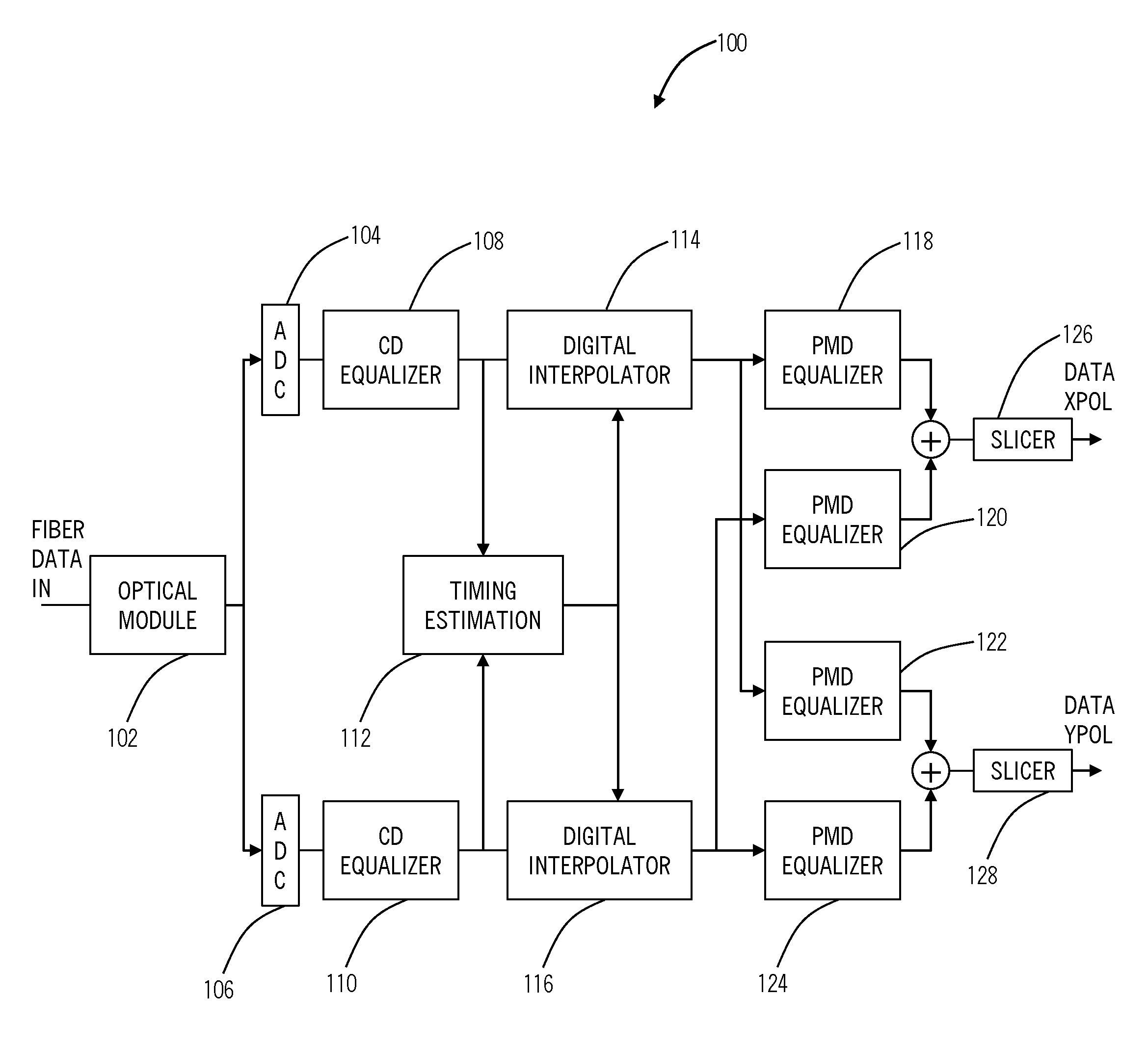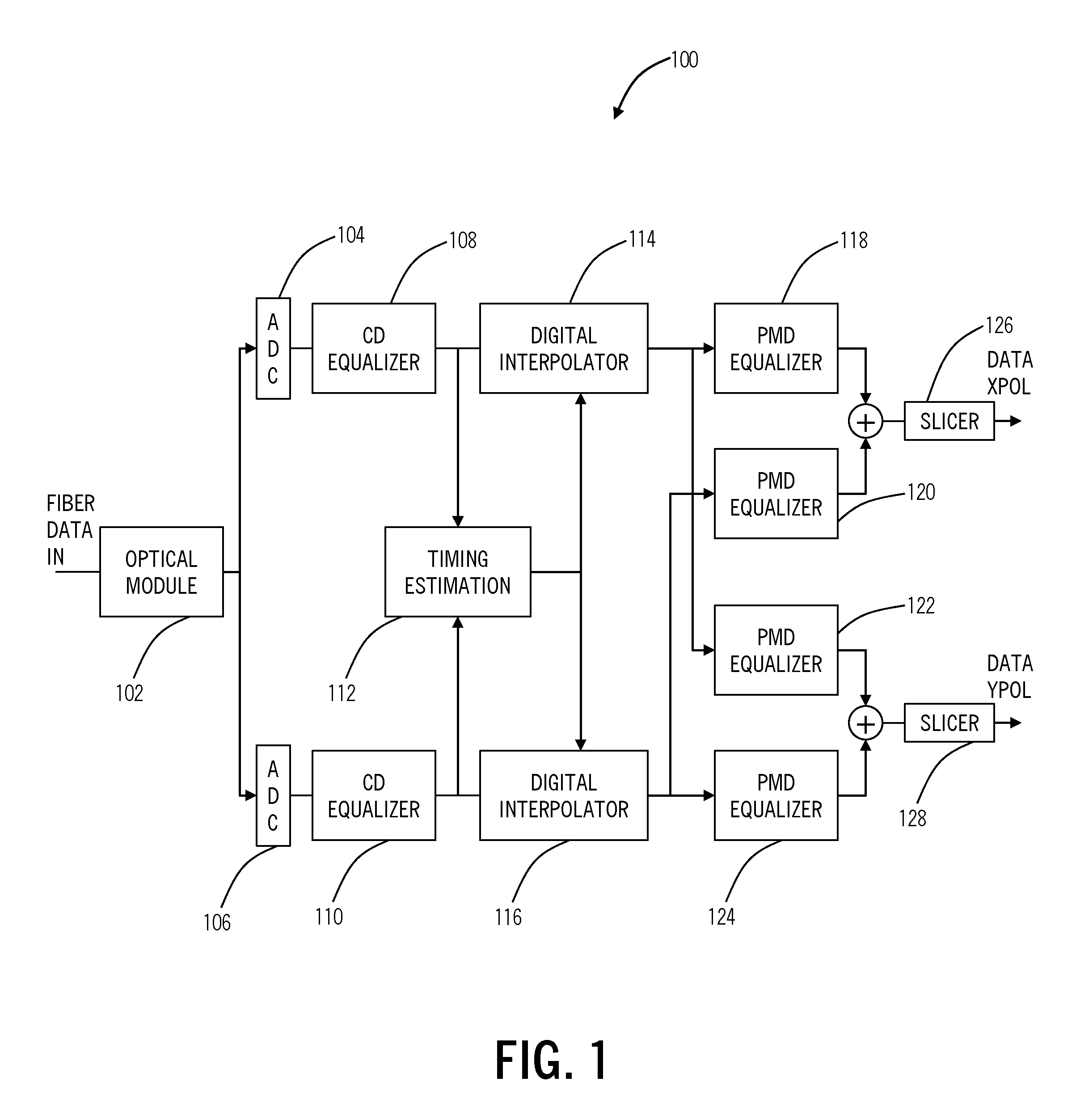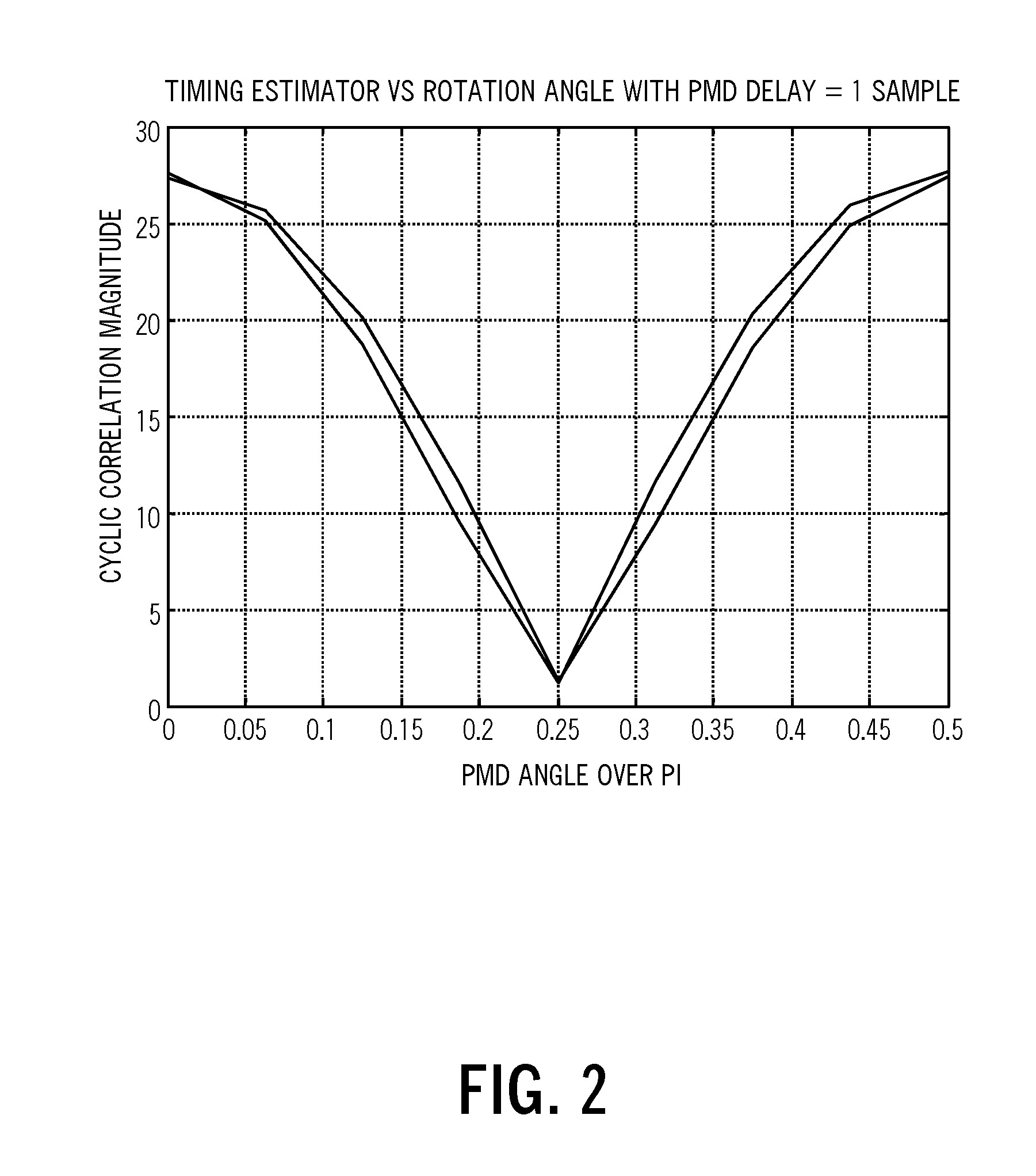Timing recovery in presence of optical impairments and optimization of equalization based on timing recovery moment strengths
a timing recovery and moment strength technology, applied in the field of optical communication, can solve the problems of limiting the performance of optical communication systems, unable to obtain reliable timing estimates, and high-speed transmission over optical fiber suffer from a number of well-known impairments, and achieve the effect of reducing hardware in the timing recovery circuitry
- Summary
- Abstract
- Description
- Claims
- Application Information
AI Technical Summary
Benefits of technology
Problems solved by technology
Method used
Image
Examples
Embodiment Construction
[0031]Precise, deterministic timing is essential to avoid major loss of signal-to-noise ratio in direct conversion high speed modems using quadrature modulation. The present invention is able to determine a stable timing point in the presence of PMD and PDL impairments, even when the direct estimate of timing becomes unreliable, is able to track changes in timing (e.g. due to PMD rotation, frequency offset) during normal operation, has a complexity that may be adjusted to the rate of change of the timing point by the amount of sub multiplexing that is be applied, and may be applied entirely in the digital domain and hence provides precise, predictable performance. Also, the present invention utilizes a monotonic relationship between the timing metric and CD setting error to provide directed search in setting the CD equalizer thereby reducing significantly the overall search effort in optimizing CD equalizer settings. This utilizes computations already performed by the transceiver fo...
PUM
 Login to View More
Login to View More Abstract
Description
Claims
Application Information
 Login to View More
Login to View More - R&D
- Intellectual Property
- Life Sciences
- Materials
- Tech Scout
- Unparalleled Data Quality
- Higher Quality Content
- 60% Fewer Hallucinations
Browse by: Latest US Patents, China's latest patents, Technical Efficacy Thesaurus, Application Domain, Technology Topic, Popular Technical Reports.
© 2025 PatSnap. All rights reserved.Legal|Privacy policy|Modern Slavery Act Transparency Statement|Sitemap|About US| Contact US: help@patsnap.com



